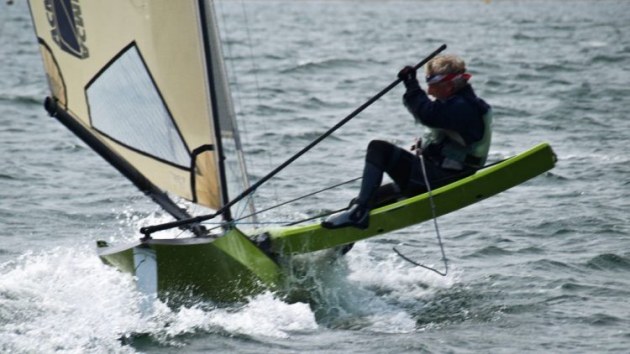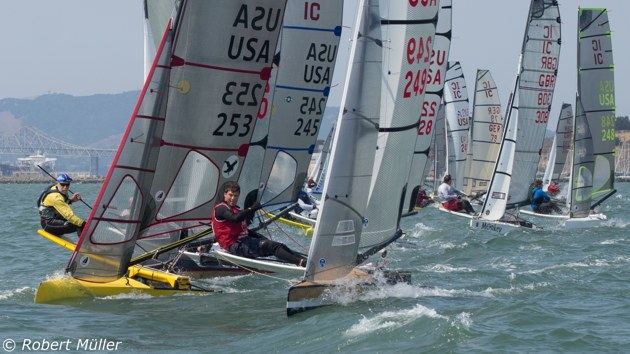International Canoe Worlds 1981
Buzzards Bay, Massachusetts, USA
UK report
After all the psychological sparring over hull weights, total rig areas and the legality of a goose- winging device seen on one boat, the eighth Canoe world championship, held in Buzzards Bay, Massachusetts, resolved itself on the morning of the final day to a simple but thrillingly close three-way sail off. After one discard, the Swede Max Tollqvist had 7.25pts, the US champion Steven Clark 8.5, and Olle Bergqvist, twice Swedish champion, was a little adrift on 10.75.
With other battles further down the fleet, it was not surprising that the first start for this final race led to a general recall. At the second try the 35-strong group started and soon Bergqvist showed at the head of the fleet. Steven Clark, hard on his heels, picked up a mess of weed and appeared to stop dead in his tracks. By the time he had cleared it, the top Swedes were gone, and although Clark clawed back from 10th or so at the first mark he never got onto terms with Bergqvist, the race winner, and Tollqvist, who took a comfortable second place to win the series.
The standard seemed considerably higher than in the last world championship. Last year's champion Martin Gullberg built a new canoe but failed to qualify for the four-boat Swedish team. The US helmsmen Clark and Chris Converse, despite sailing in their home water showed no improvement on their earlier results.
What was definitely new was the standard of mid-fleet competition. Established competitors could find themselves back almost in the twenties at the end of the first triangle. On the last day, besides the three-way struggle for the championship, there were, for instance, five helmsmen from three countries disputing sixth place overall.
Of the top contenders only Olle Bergqvist's boat departed from the general simplicity of layout. He controlled mast bend with a puller and with instantly adjustable (36:1) shroud tension. Converse (sixth overall) had an unusual rig with an over rotating mast and a full width traveller but showed real speed only on one day. The British boats departed from the norm established by the Americans and Swedes and attracted interest for their superior downwind speed.
The Swedish grip in Canoe world championships has yet to be prised loose. Their programme of continuous technical advance particularly in sail cutting, has consistently produced superior boat speed, matched only by the American builder Steve Clark. The Americans, British and Canadians all have new and lively fleets. For them, perhaps, next time. But the aim is to match Max Tollqvist in speed, consistency and meticulous boat preparation.
Perham Harding
This report first appeared in "Yachts and Yachting" magazine.
A US Viewpoint - from Earwigoagin Blog
[In 1981] I raced in the International Canoe Worlds in Marion Massachusetts (Buzzards Bay). Organized by Steve Clark, it was the first International Canoe Worlds held in the U.S. I had been racing the International Canoe for about six months, definitely a greenhorn in these very tricky craft, and I arrived with no great expectations. Setting up the International Canoe at Tabor Academy (the dinghy park, the dorm housing, and the meals were completely run out of this school), I was gratefully surprised to find that most of the fleet was new to the International Canoe as well.
In the fall of 1980, Steve Clark had very generously given me one of his production International Canoes as a Chesapeake Bay fleet starter boat. Steve had started building composite (glass hull/wood deck) International Canoes in a converted grocery store in a sleepy upstate New York hamlet on the eastern shore of Lake Cayuga, a town named King Ferry, a town with one crossroad and four buildings staking out the four corners. Steve had picked up a used Manana design International Canoe in the mid 70's, and had become completely smitten with the speed, the twitchiness, the feel of the International Canoe as a racing dinghy. Steve had found the U.S International Canoe class (or the decked sailing canoe as the old timers would say) in a sorry state, had been for years. Moribund, geriatric, and insular, the American-style International Canoe was only raced out of Grants Boat Yard in City Island. To change that, on a true believers mission, Steve had set out to find some converts.
Like a true Johnny Appleseed, Steve had decided to seed his modern English-style "King Ferry" International Canoes around to the major yachting centers of the U.S, putting them into the hands of those who had backgrounds in tippy dinghies. I became a seedling, Del Olsen and Scott Young of San Francisco became West Coast seedlings. And these seedlings were now arriving at Tabor Academy for a World Championship, along with the British, Germans, Canadians, and Swedish.
The pre-regatta form book certainly had the Swedes and Steve Clark as favorites, they at least had several years experience and Steve, coming out of nowhere, had given the Swedes a major fright when he competed on their home waters in the 1978 World Championship. The English International Canoe fleet had seen a recent influx of top ranked International Moth sailors, Colin Brown, Chris Edwards, and Chris Eyre. But they were all new to the International Canoe and, though certainly used to sailing tippy boats, an unknown quantity.
As far as the American newcomers; we had raced a couple of drifter regattas on the East Coast that summer; we were expecting the Buzzards Bay Southerly Buster, we were expecting to be hammered and upside down quite a bit, we were young and ready for the challenge. The battle to come would be not so much against competitors but against this strange, narrow, wonderfully fast sailing dinghy with a sliding seat.
The racing for the 1981 International Canoe Worlds at Marion was breezy as expected but the famed Buzzard Bay seabreeze only made a late appearance for one race; we spent most of the week in good Northerly breeze courtesy of a strong cold front; a rare weather occurrence for the U.S East Coast in August.
The regatta was fought between the four Swedes and Steve Clark, the rest of us were nowhere close in boatspeed or boathandling. For me, tacking was a 40/60 proposition in the breeze, it being very easy to stall these craft head to wind and then end up going backward.
There were thirty boats at the regatta from five countries; US, Canada, England, Sweden, Germany. I ended up smack dab in the middle in fifteenth. I made it into the top ten twice with two eighth places but by the end of the week I was exhausted. I made a hard landing coming in from Thursday races and bent my rudder shaft. I did my best at straightening it out but I sailed my worst race on the last day. Since I had already racked up a DNF as my drop race, adding a 22 didn't help my overall score.
But it was a great regatta and I was going to spend the next fifteen years of my life trying to learn how to tack these beasts (and gybing them in a breeze was no picnic either).
Oh! I did have one fleeting moment of glory in the regatta. I wrote about it for the U.S Canoesletter.
From the April 1985 issue of the Canoesletter
"In the second race of the 81 Worlds at Marion three canoe neophytes, the author, Tim Prince and Martin Herbert went the ‘wrong way’ (according to local knowledge) on the first beat to round the weather mark 1,2,3. Heady stuff and, with soon to be world champion, Swede Max Tollvist, in fourth place, this trio of North Americans fought like demons to hold their positions down the next two reaches. The first beat had been the lightest of the series, a 5-8 knot southerly, but as we approached the leeward mark the famed Marion seabreeze had started to kick in at 15-20 knots. Tim and Martin had sneaked past your author leaving me to round in third, one boat length ahead of Max. I resolved to sail as fast as my limited canoe experience would allow and not bother worrying about Max (for the Swede had already proved devastatingly quick in a breeze). Around the leeward mark I hardened up on port tack, attention riveted on snaking up and over the waves, the senses devoted to keeping US 163 flat and driving; sailing totally absorbed, sailing with blinders on. Two minutes passed wrapped in this hyper-concentration. It was time to check on my competition. I quickly stole a glance over my aft shoulder. No Max? Had he capsized? Not that I could see. I rotated my torso forward and peered upwind. Shock and despair! Max was 50 yards upwind and going twice as fast. My first hard lesson on the distance an International Canoe planing upwind could put to an International Canoe that, in relative terms, was only mushing along.
As it turned out there were 30 of us mushers at the Worlds and only five (the four Swedes and Steve Clark) who had mastered the art of upwind planing in an International Canoe. It was not surprising the North Americans were so deficient. Most of us were lucky if we had six months of tiller time on the International Canoe."
What other memories do I carry from the 81 International Canoe Worlds?
I've done three other regattas where the housing, food, and dinghy park were based out of one site (excluding Sugar Island Week, where everyone is stuck on the island for a week). Today, it's not common to do that for regattas (except, like Sugar Island, camp regattas seem to be getting popular, which uses the same concept of throwing everyone together after racing). Having everything at Tabor Academy was good. Since most of us were on a steep learning curve, shared experiences across nationalities took on even more meaning.
I had a one year old infant at home that was an early riser. Keeping my morning routine, around 6:30 am I'd be up in the dim beginnings of daylight, sauntering among the different International Canoes scattered about the dinghy park. Just me and one of the Germans, who, very punctually, would hoist his sails with at least 3 1/2 hours before he had to launch. There's still something about racing dinghies waiting in the half morning light that I find very picturesque.
I developed later in the week, a physical affliction known only to sliding seat sailors; severe abrasions on each butt cheek from sliding in and out (several International Canoe sailors from that era slyly referenced such malady in the names of the IC's, i.e "Sticky Buns" and "Rosie Cheeks"). Mid week a lot of us were walking bow legged like cowboys. I thought I had enough padding but as I was to find out later, any movement whatsoever of the piece of clothing or wet suit that was layered next to your butt would act like sandpaper. The physical hurt ratcheted up so, that come Thursday, I was desperate enough (and I alone) to come up with the solution of taping up my butt cheeks with duct tape. It worked well enough for Thursdays racing but when I decided to remove them after the racing, the real pain began. I had no idea how many little tiny hairs you have on your butt. And with duct tape, there is no quick rip it off. Picture Steve Carrell's chest hair removal (movie '40 Year Old Virgin') in very, very, slow, slow motion.
I roomed with a young English sailor (I think Adrian was his name), who would attack his IC with a saw, hammer and nails every evening after sailing. On measurement day, Adrian found out his IC was considerably overweight. After determining that the previous owner had squirreled away lead weights in the hull (ostensibly to prevent nosediving), Adrian proceeded to cut huge square holes in the deck. He found the weights and then closed up the holes by nailing some scrap plywood he found laying around the dorms. He had seat carriage problems which he fixed by nailing some large 2X4's to the carriage. In all my time racing dinghies, I have never seen someone destroy in a week, what had been a very pretty cold molded International Canoe.
"Tweezerman"
Rigging Notes from 1981 World Championship By Tim Prince
Centerboards: Most of the top competitors had centerboards with a chord at least 12" (30cm) at the hull. A majority had a large chord taper with a chord less than 6" (15cm) at the tip. The large taper should give a little more power in strong winds, possibly at the expense of performance in light and moderate wind. It also reduces wetted surface when the centerboard is raised for reaching, and facilitates tapered thickness so that drag is reduced in the reaching position. Two boats used Tasar boards with some success. These appear to be well constructed with a suitable chord distribution, but the thickness distribution is not good, being an extreme "laminar" board designed to perform at low lift. Someone hasn't cared to pay attention to the theoretical developments of the last l5 years which show that there aren't great improvements to be made over the old 4-digit NACA series (which Lindsay still recommends). High lift-to-drag ratio on symmetrical sections requires the maximum thickness to be near 30% chord, with the thickness at 7.5% chord about 60% of the maximum and the after surface preferably nearly flat from 50% chord on back. This is just a little finer than the four digit series. The theoretically useful variations are relatively small. The winning boat had the after end of the trunk 2m (6'6") from the stern, which is 3" (Scm) further aft than the majority of the competitors.
Rudders: Most of the top finishers had rudders extending about 20" (5Ocm) below the boat. Apparently this helps retain control when jibing in strong wind.
Jibs: Four of the first five had their jibs set fairly close to the mainsail, with the tack set 1'4" to 1'6" (40-44cm) from the bow. These boats generally had jibs of about 2.2 sq.m. as did the majority of the competitors, but with a slightly lower clew. The boats with the jib tack furthest aft also had centerboard trunks further aft, and either carried more rake or stepped the mast further aft than most competitors. The 10cm reduction in separation between jib and main would increase jib stay tension, thereby reducing sag and would reduce the effect of mainsail trim on helm balance. In both of these ways sailing in strong winds would be improved. The cut of the best performing Swedish jibs was quite flat and twisted off in the upper part, while the foot was cut full with maximum camber near the middle. The leach was loose and apparently needed battens to control flutter. The Swedes had a small curved bridge on which the jib cam cleats and other controls were mounted. Most of the British used jib clubs, which appeared to gain downwind, but lose upwind, aside from the ease of tacking. Two apparent disadvantages were the difficulty in controlling the camber and the increased gap between the jib and deck. Main: The British mains with longer booms and shorter head battens appeared to improve stability and speed downwind, but had no evident advantage upwind.
From the US newsletter, January 1982
What Happened at Marion?
By Chris Converse, ex US newsletter, January 1982
For one thing, the largest group of IC's ever brought together, 32, happened.
Being one of the lucky ones to be on the starting line, I can tell you it was some thrill. Six days of fine racing also happened and I'm afraid most canoe publications have beaten me to the details. But what happened to the U.S. team? The U.S. team made a fine showing. The general attitude for preparing our sailors for the Worlds was to simply get people out sailing more. The trend was towards boat handling and short races. Any changes in equipment this year were small. Steve Clark had his whisker pole, I had my over-rotating mast, and Martin Herbert (our resident Canadian) had his genoa jib! We were just trying to improve a good thing.
Our first shortcoming at Marion was that we hadn't raced in fresh breezes last summer and virtually the whole Worlds was held in the 15-20 kt. range. So people were not in shape to hang on in those fast conditions and perhaps didn't have their boats tuned. Combined with this was the fact that the one mile windward legs at the Worlds seemed much longer than the one mile beats we had been sailing all summer. What you end up with is a 9 mile race that seems to last forever. So although we had good intentions with our little Worlds warmups and short course races, they didn't fit the bill for the Worlds. In a boat such as the IC, if you're racing in 18 kts. of breeze around a 9 mile course, the name of the game is still horsepower because once you are planing, even small differences in speed translate into big chunks of time as could be observed with the top three boats of the fleet; on the horizon for most of us. Something to think about in gearing up for '84
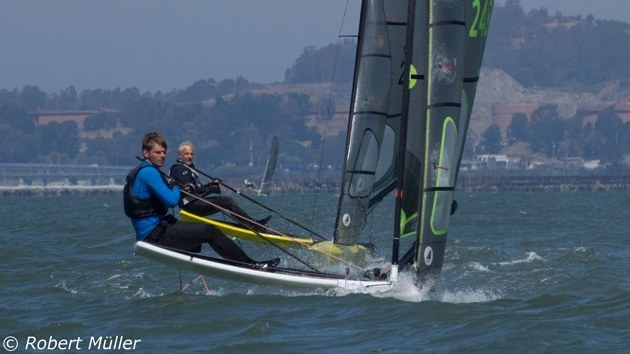

Ulrike_veerkamp.jpg)
Ulrike_veerkamp.jpg)
Ulrike_veerkamp.jpg)
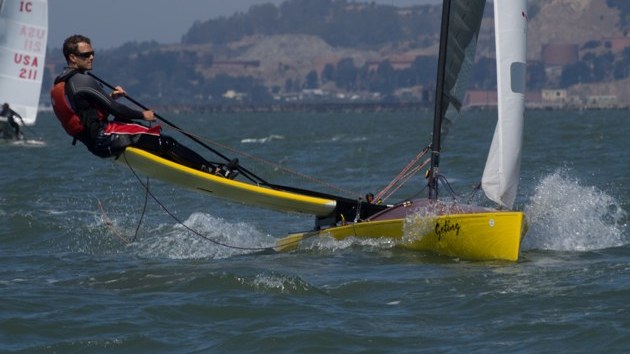


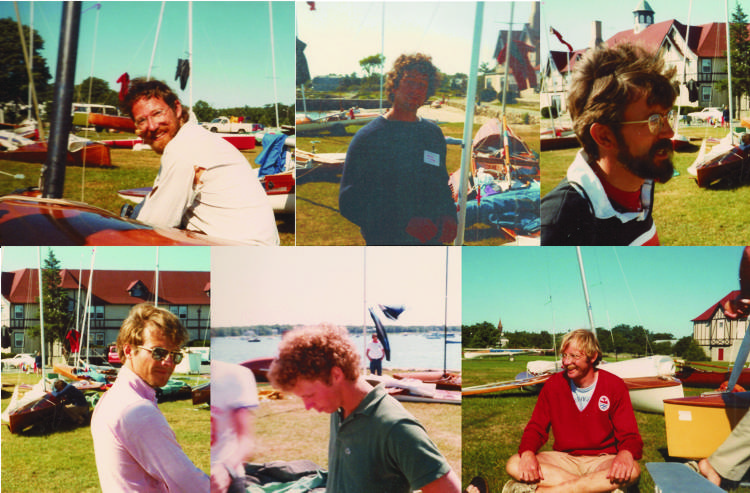

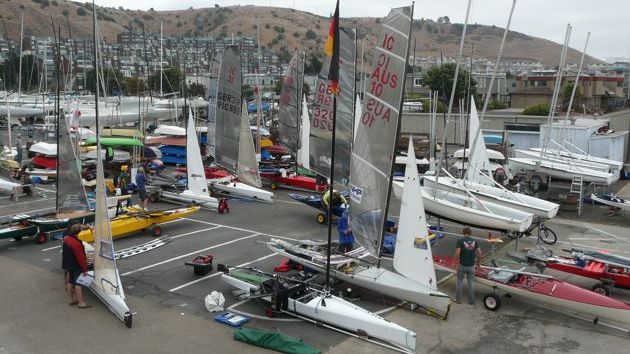
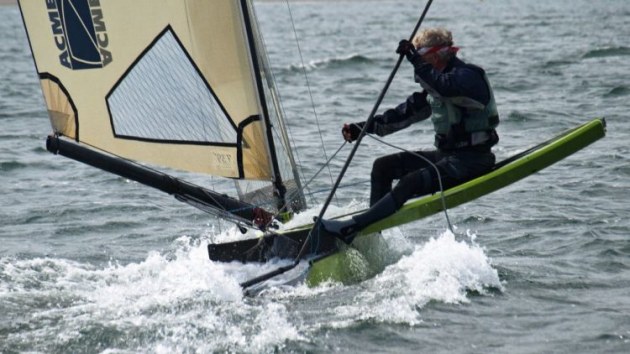
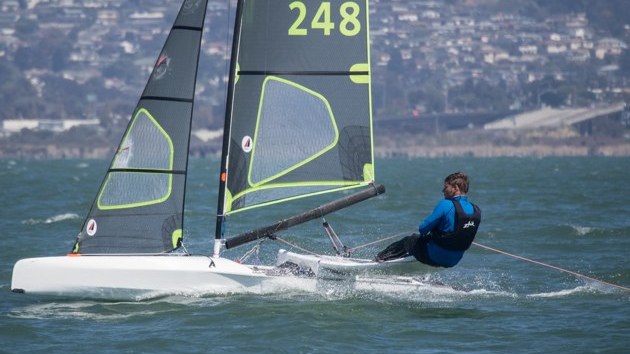
Ulrike_veerkamp.jpg)
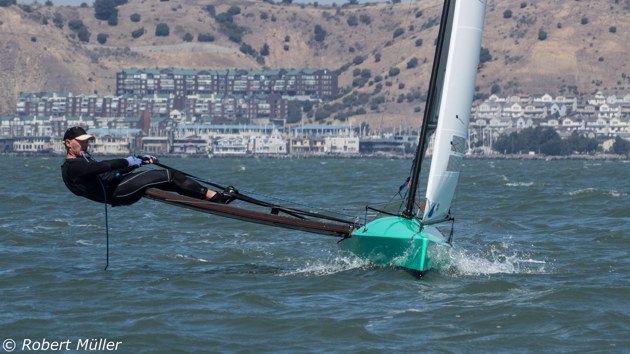
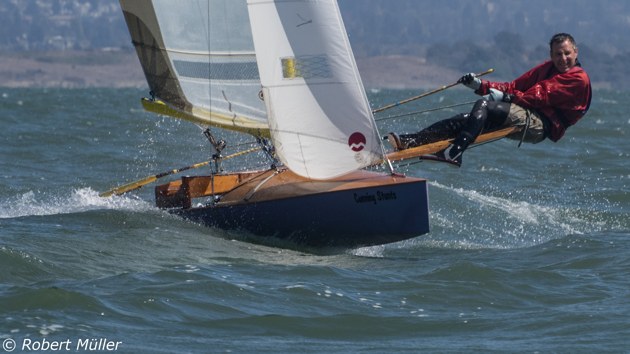
Ulrike_veerkamp.jpg)
